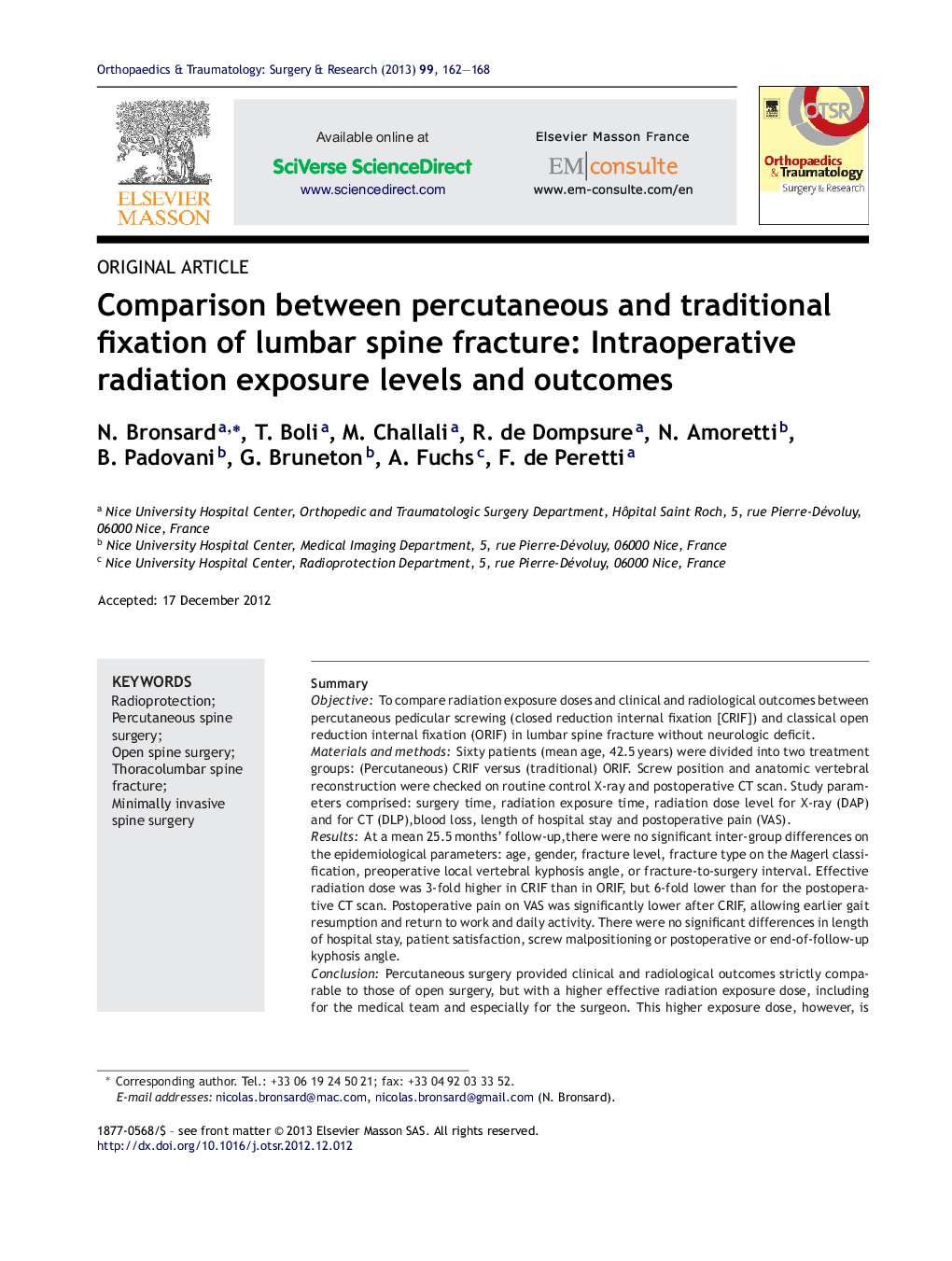| کد مقاله | کد نشریه | سال انتشار | مقاله انگلیسی | نسخه تمام متن |
|---|---|---|---|---|
| 4081702 | 1267605 | 2013 | 7 صفحه PDF | دانلود رایگان |

SummaryObjectiveTo compare radiation exposure doses and clinical and radiological outcomes between percutaneous pedicular screwing (closed reduction internal fixation [CRIF]) and classical open reduction internal fixation (ORIF) in lumbar spine fracture without neurologic deficit.Materials and methodsSixty patients (mean age, 42.5 years) were divided into two treatment groups: (Percutaneous) CRIF versus (traditional) ORIF. Screw position and anatomic vertebral reconstruction were checked on routine control X-ray and postoperative CT scan. Study parameters comprised: surgery time, radiation exposure time, radiation dose level for X-ray (DAP) and for CT (DLP),blood loss, length of hospital stay and postoperative pain (VAS).ResultsAt a mean 25.5 months’ follow-up,there were no significant inter-group differences on the epidemiological parameters: age, gender, fracture level, fracture type on the Magerl classification, preoperative local vertebral kyphosis angle, or fracture-to-surgery interval. Effective radiation dose was 3-fold higher in CRIF than in ORIF, but 6-fold lower than for the postoperative CT scan. Postoperative pain on VAS was significantly lower after CRIF, allowing earlier gait resumption and return to work and daily activity. There were no significant differences in length of hospital stay, patient satisfaction, screw malpositioning or postoperative or end-of-follow-up kyphosis angle.ConclusionPercutaneous surgery provided clinical and radiological outcomes strictly comparable to those of open surgery, but with a higher effective radiation exposure dose, including for the medical team and especially for the surgeon. This higher exposure dose, however, is to be relativized by comparison to that of the postoperative CT scan, which involved a much higher exposure dose for the patient.Level of evidenceLevel IV. Retrospective study.
Journal: Orthopaedics & Traumatology: Surgery & Research - Volume 99, Issue 2, April 2013, Pages 162–168